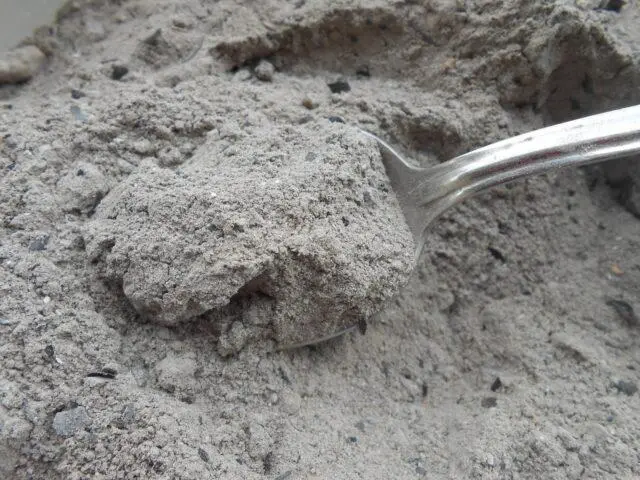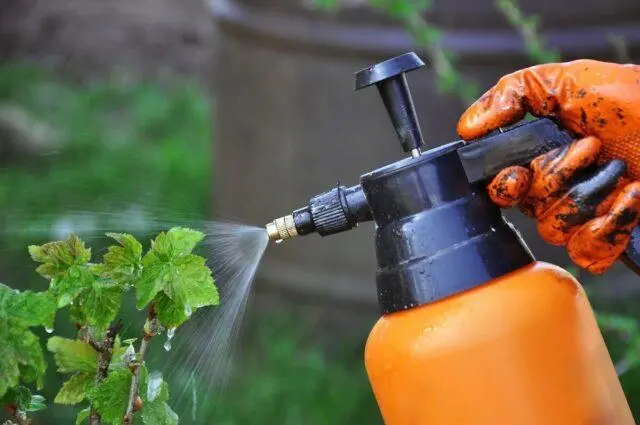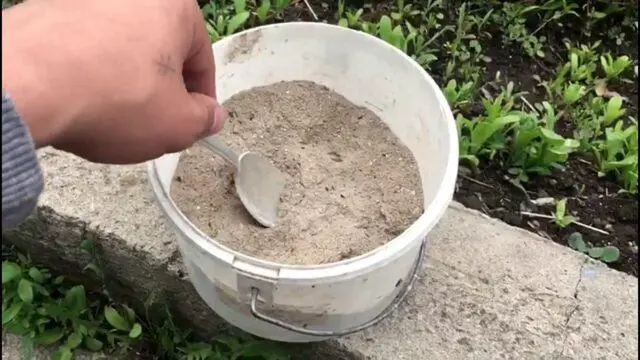Contents
Currant ash can be used as a top dressing and insecticide. It saturates the soil with potassium, phosphorus, silicon, magnesium and other valuable elements. The tool is used in different ways – root and foliar application. It is used for the formation of ovaries and fruits, as well as for the destruction of pests (aphids, moths, ants).
Is it possible to pour ash under the currant
Ash as a fertilizer is used for currants and many other crops. Its advantages are associated with rich chemical composition:
- calcium ensures the growth of green mass;
- potassium stimulates the flowering and fruiting of currants;
- sodium is responsible for water balance;
- phosphorus accelerates metabolic processes in cells;
- magnesium takes part in photosynthesis;
- silicon promotes the absorption of trace elements from the soil;
- chlorides protect plants from fungi.
Ash obtained from linden or birch gives the greatest benefit to currants. This is a high-quality raw material that can be used both on its own and in a mixture with mineral supplements.
Even if you apply them twice a season, the currant will grow well and give a lot of buds. Fertilizer will positively affect the formation of ovaries and fruiting. In addition, it can be used as a prophylactic against certain diseases and pests.
Advantages and disadvantages
Wood ash as a top dressing for currants has several important advantages:
- This is an affordable raw material that is easy to obtain at home.
- It is used as a top dressing, as well as for the prevention of diseases and pests.
- Ash provides a normal pH, helps eliminate high acidity. Thanks to this, the currant absorbs nutrients well and develops normally.
Ashes have practically no disadvantages. However, it is important to understand that it alkalizes the soil. If the soil is saline, fertilizing is not worth it. In this case, on the contrary, acids should be added to it. For example, pour a solution of 9% vinegar (100 ml per 10 liters per 1 m2).

Top dressing is easy to get yourself at home
What soils are suitable for
It is recommended to feed currants with ash on depleted soils with an acidic reaction (pH less than 5,5). Top dressing is of particular benefit for sandy and peaty soils.
The fertilizer is universal – in small quantities it can be used on different types of soil. It is previously recommended to determine the acidity using indicator paper or a pH meter.
If the pH is too low (no more than 5,0), it is recommended to mix ash and slaked lime in a ratio of 1:1 and apply the mixture in an amount of 300 g per 1 m2.
The benefits of ash for currants
Ash for blackcurrant and other varieties brings many benefits. The main value is a source of phosphorus and potassium. These trace elements perform several functions:
- strengthening the root system;
- formation of ovaries and fruits;
- acceleration of metabolic processes;
- increased frost resistance;
- restoration of immunity;
- improving the taste of berries, keeping quality, fruiting.
It is usually customary to fertilize currants with ash in spring and autumn. Although you can do this throughout the season. It is especially important to fertilize at the moment when clear signs of phosphorus and potassium deficiency are found:
- yellowing of leaves;
- twisting and falling;
- a sharp slowdown in growth;
- the color of the foliage becomes bluish-green, purple, violet;
- petioles acquire a lilac hue;
- blanching of old currant leaves;
- partial death of tissues;
- the edges and tips of the leaf plates are bent up;
- the shape of the leaves becomes domed.
When he brings ash under the currant
Fertilizing can be done throughout the season. It is advisable to alternate it with organic matter and complex fertilizers – then the effect will be maximum.

Ash is applied throughout the season
In the spring
This is the best time to feed. Fertilizer is given at the time of preparing the seedlings for planting, as well as for preventive treatment against infections and insects. For this, an infusion of 300 g per 10 liters is prepared and the bushes are treated twice – at the stage of bud swelling and during the appearance of flowers. Usually spraying is carried out in the first decade of April, and then on the May holidays. Dates may vary slightly depending on the region.
Lettom
In summer, fertilizer is used in the form of water infusion. You can enter multiple times:
- At the end of flowering, at the stage of bud formation.
- At the beginning of fruiting.
- After the harvest.
Potassium and phosphorus help in the formation of currant berries, and also strengthen the root system. In addition, in summer, ash is effective against aphids on currants. To do this, the bushes are powdered with a small amount of powder or treated with an aqueous infusion. To make it better adhere to the surface, add laundry soap chips in the amount of 50 g per 10 liters.
In the autumn
In autumn, currants can be fed with ashes 2-3 weeks before the first frost. In a 10-liter bucket, dissolve 250-300 g, insist and irrigate the near-stem circle. When planting seedlings, the powder is mixed with fertile soil and poured into the hole.
How to make ash under the currant
Powder can be added in a variety of ways. Often it is insisted in water and then watered the soil. But there are other ways, their use depends on the purpose, stage of development, the state of the bush. Spraying, dusting and other procedures can be carried out. How to do this correctly is described below.
In dry form
In dry form, ash can be applied for planting currant bushes in the fall. It is mixed with sand in equal amounts and laid on the bottom of the hole. It can also be mixed with a fertile mixture (surface soil, peat, humus and sand in a ratio of 2:1:1:1). Up to 300 g of fertilizer is given for each pit.
Spraying
Spraying currant bushes is carried out to prevent pests. It is necessary to dissolve 200 g per 10 liters, insist, pour into a spray bottle and proceed to processing. You need to work in dry and calm weather, preferably on a cloudy day or late in the evening. In the coming days, you should not do watering, and even more so use a drip system.

For spraying, the infusion is poured into a spray bottle.
Dusting
This is the easiest way to add ash for currants. Bushes are powdered, based on a consumption of 500 g per plant. Ash should remain on all shoots, leaves and other ground parts of the plant. The work is carried out in dry weather, and according to the forecast, there should be no rain and strong winds in the coming days.
Since the powder will fall from the bush to the soil, after 2-3 days it is recommended to make loosening. Weeding can be carried out at the same time. Since there is a lot of potassium and phosphorus in the raw materials, appropriate fertilizers should be abandoned in the next month.
Root dressing
For application under the root, watering is carried out with infusion (200-300 g per 10 l). This can be done throughout the season with an interval of 1,5 months. At the same time, it is important to alternate ash with complex mineral compounds and organic matter (mullein, litter, infusion of cut grass).
Application recipes
Ash for currants and other plants is used as an insecticide and natural top dressing to form ovaries, strengthen the root system and accelerate growth. There are several recipes for using this composition. For example, you can prepare a liquid organic fertilizer. It is used for urgent feeding in case of a lack of nutrients (especially phosphorus and potassium).
It is quite simple to prepare the composition – they take an infusion of mullein (1:10) and add 10 g of wood ash powder to it. Mix thoroughly and infuse for several hours, then water under the root. It can also be used for spraying as a prevention of insect invasion.
Another recipe is a concentrated solution of wood ash. To prepare it, proceed as follows:
- Measure out 500 g of powder.
- Dissolve in a small amount of hot water.
- Mix thoroughly.
- Bring to a total volume of 10 liters.
- Insist 2-3 days.
- Get shavings of laundry soap (40 g).
- Add to the solution and mix.
The resulting liquid is poured into the sprayer and the currant bushes are processed. The tool helps to cope with such dangerous pests as ants, aphids and moths.

Ash acts as an insecticide
Before flowering, currants are fed with complex fertilizer. But if it is not there, you can mix 200 g of ash, 20 g of urea or ammonium nitrate and dissolve in 10 liters of water. Watering is done at the root no later than mid-May. This tool will fill the soil with nutrients and stimulate an active set of green mass.
Application scheme
Application schemes depend on the form and purpose of the powder application:
- Water infusion is prepared based on the ratio of 250-300 g per 10 liters. Infuse in water at room temperature for a day, mix thoroughly and start watering.
- For foliar treatment, exactly the same solution is prepared. It is used for total spraying of the entire bush – branches, shoots, leaves.
- For manual dusting, a ratio of 500 g per 1 bush is taken as a basis.
- For dusting the near-stem circle of currants, 300 g is used per adult bush.
Conclusion
Currant ash is one of the best dressings containing a rich set of elements. This is a free tool that can be used throughout the season. It is especially important to fertilize in spring and autumn. In summer, it is used when necessary, often as an insecticidal agent.









